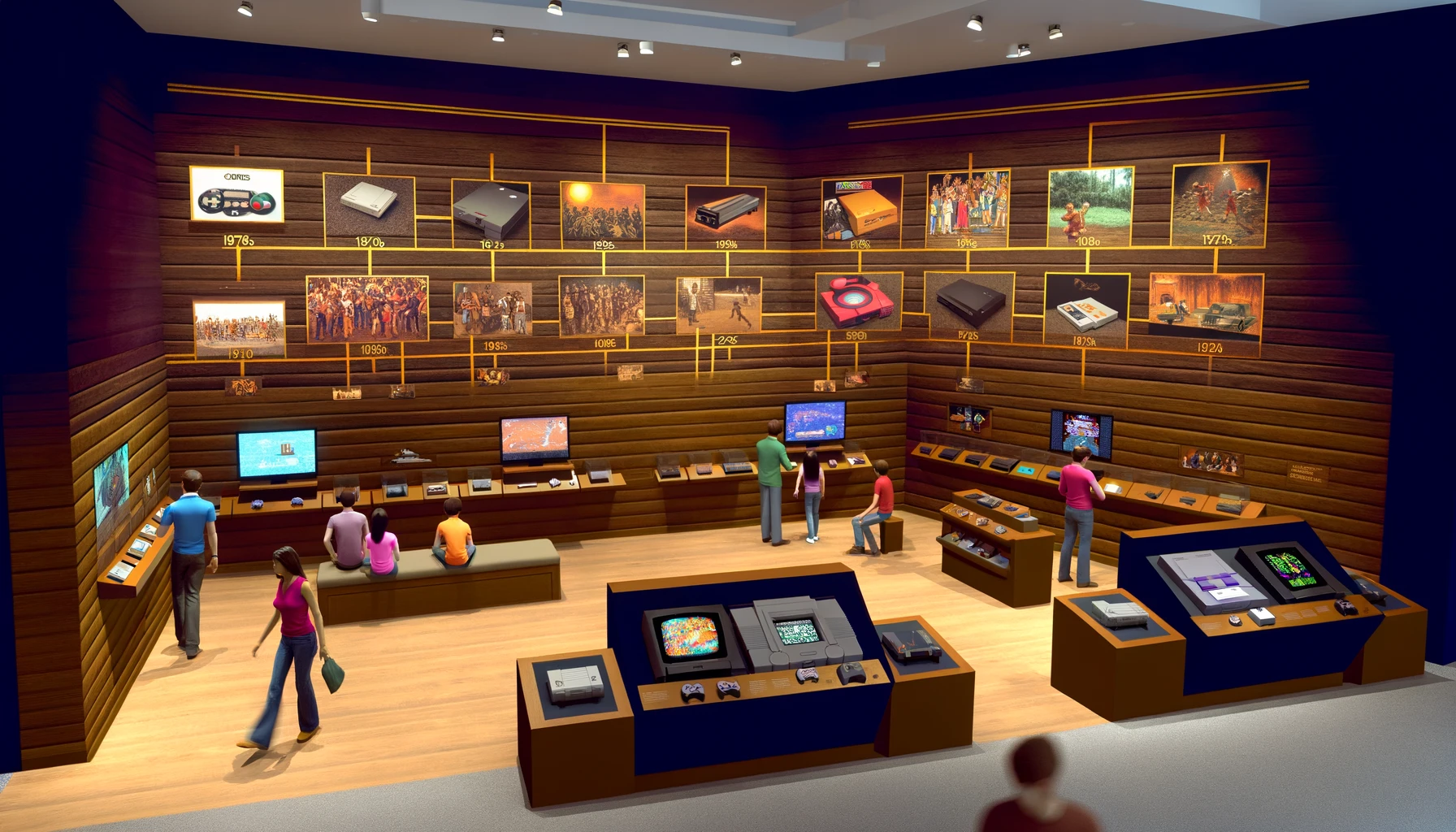The history of video games spans over nine generations of consoles, each marked by technological advancements and cultural shifts that have dramatically shaped the gaming landscape. It began in the early 1970s with the first generation of consoles, such as the Magnavox Odyssey, which introduced the concept of interactive entertainment to households. This era was defined by simple graphics and gameplay, limited to what the primitive hardware could handle.
As technology progressed, so did the capabilities of consoles. The second and third generations saw the introduction of iconic systems like the Atari 2600 and the Nintendo Entertainment System (NES), which brought video games into mainstream culture with titles like “Pac-Man” and “Super Mario Bros.” These games not only improved graphically but also offered more complex and engaging gameplay.
The fourth and fifth generations introduced 16-bit and 32/64-bit systems such as the Super Nintendo and Sony PlayStation, which enhanced audiovisual capabilities and introduced 3D gaming, respectively. This period also saw the rise of competitive gaming and the beginning of online connectivity.
The sixth generation, including the PlayStation 2 and Xbox, brought DVD media and online gaming to the forefront, transforming how games were played and distributed. The seventh generation continued this trend with high-definition graphics and motion controls, as seen in systems like the Xbox 360 and Nintendo Wii.
Today, the eighth and ninth generations, featuring the PlayStation 5 and Xbox Series X|S, have pushed the boundaries with ultra-high-definition visuals, reduced load times through SSDs, and cloud gaming capabilities, ensuring that games are more immersive and accessible than ever. Throughout these generations, video games have evolved from niche hobbies to a dominant force in entertainment, reflecting technological innovation and changes in consumer interaction with media.
First Generation
1972-1980
The first generation of video game consoles marked the beginning of home video gaming, spanning from the early to mid-1970s. During this era, gaming systems were quite primitive compared to today’s standards, but they laid the foundation for the multi-billion dollar industry that would follow.
Second Generation
1976-1992
The second generation of video game consoles, spanning from the late 1970s to the mid-1980s, marked a significant evolution in home gaming, introducing more advanced graphics, sound, and gameplay mechanics. This era saw the rise of game cartridges, allowing for a broader library of games and more complex gaming experiences.
Third Generation
1983-2003
The third generation of video game consoles, spanning from the early 1980s to the early 1990s, heralded the era of 8-bit graphics and more sophisticated gameplay. This generation was pivotal in establishing the home console market and introducing many iconic games and franchises.
Fourth Generation
1987-2004
The fourth generation of video game consoles, often referred to as the 16-bit era, spanned from the late 1980s to the mid-1990s. This period saw significant advancements in graphics, sound, and gameplay complexity, further cementing video gaming as a popular form of entertainment.
Fifth Generation
1993-2006
The fifth generation of video game consoles, often called the 32-bit and 64-bit era, spanned from the early 1990s to the early 2000s. This generation introduced 3D graphics and more complex gaming experiences, significantly advancing the medium.
Sixth Generation
1998-2013
The sixth generation of video game consoles, often referred to as the 128-bit era, spanned from the late 1990s to the mid-2000s. This generation marked significant advancements in graphics, online gaming, and multimedia capabilities.
Seventh Generation
2005-2017
The seventh generation of video game consoles, spanning from the mid-2000s to the early 2010s, marked a significant leap in high-definition graphics, online connectivity, and motion control gaming.
Eighth Generation
2012-Present
The eighth generation of video game consoles, starting in the early 2010s, brought advanced graphics, increased social connectivity, and diverse gaming experiences.
Ninth Generation
2020-Present
The ninth generation of video game consoles, beginning in the late 2020s, continues to push the boundaries of technology with enhanced graphics, faster load times, and advanced features like ray tracing and AI-driven gameplay.
